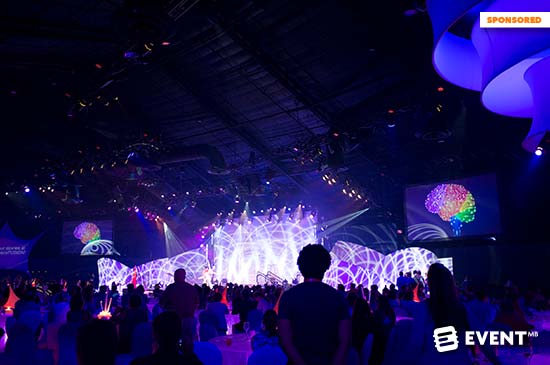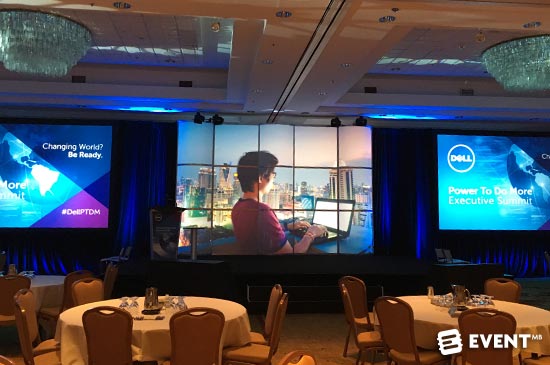Skift Take
What happens on stage leaves a lasting impression with your customers, which is why event profs need to be production savvy. It starts with managing your speakers through a flawless stage experience.
This is a sponsored post written by Trish Knox, Owner/President at TK Events Inc. More information about Event Manager Blog’s sponsored posts.
Whether you’re a seasoned producer and already have a framed to-do list hanging in your office, or an event manager just handed the huge responsibility of managing a general session or stage production — no matter where you are in your production expertise, you will want to have a process to manage your speakers effectively on site. Here’s some handy tips for managing your most senior executives and high profile speakers through the production process.
##abovethefold##
Make Sure You’re On The ‘Need To Know’ List
Ensure your client shares all guest keynote contracts with you as they will outline technical expectations. A seasoned speaker will be happy to have you join a briefing call so you can talk techie. Outlined below are some of the questions you’ll need to have answers to in order to advise your AV team. See also notes to speakers from backstage
16:9 – 4:3 and Everything In Between
Advise the speaker what format you will be running for main stage presentations. If your event is 16:9 ratio and the speaker appears with a presentation in 4:3, it is unlikely you will have time to re-format the presentation. The result: those dreaded black bars on the screens.
Who Is Advancing Slides?
We’ve learned the hard way to have all presentations on the show computers at your ops table. Even if a speaker insists they have their computer on stage with them, ask for a back-up of the file so in the event of a technical issue, you can take over operating slides.
Side Note #1
Make sure you have a dedicated main contact in terms of presentations. If you don’t have someone on your production team to manage updates to slides and speaker notes, ensure the AV company provides someone. Otherwise you will be running around with your hair on fire trying to manage the show, plus slide updates. Not all of us are Keynote and Powerpoint gurus and no one wants an executive hanging over their shoulder while they fumble through making slide changes.
But Here’s A Secret
Often, the AV company slide operator is not a designer, which means if there are last minute changes to content, the crew won’t be able to make them. You are best to insist on your own slide designer/speaker support person as part of your production team and build that into your quote to the client.
More Tips For Avoiding Surprises
Speaker Notes
Does the speaker use a teleprompter? Comfort monitor? Are there notes? We could write an entire separate post on managing speaker notes, but make sure you know how your speaker prefers to present.
What kind of microphone do they prefer? Wireless lav? Some keynote speakers insist on a headset mic or sometimes referred to as a ‘madonna mic’.
Panels. Panels. Panels.
They can grow like a weedy garden. When your client mentions they’ll have a panel, your next question should be how many speakers? This is important so you know how many lav mics and chairs or stools you’ll need. Get photos of any set pieces and have your client approve them. Finally, make sure you lock your process for Q&A – will you have mic runners, questions submitted via an app? And how will you communicate to the panel host?
Side Note #2
We once had a client panel grow to nine speakers without being told and it wasn’t until we were onsite and the client realized there weren’t enough mics to accommodate everyone that they realized – the event planner should be on the ‘need to know’ list.
Rehearsals Will Save You
This is a difficult area you want to tread carefully into. Depending on the type of event and if the content is new, most executives will want a rehearsal. However, there are many who feel they don’t need one.
Our best advice is to plan for rehearsals. Allow for plenty of time to block calendars so that speakers can book their travel around rehearsal schedules. At the very least, if an executive does not require a rehearsal, they will need a ‘tech check’ – this is a few minutes to walk the stage, understand who will intro them, and click through slides, play back any videos.
Will The MC Please Stand Up
Who will be introducing each speaker? This is probably one of the most last minute revelations on the part of a client, with many often not thinking about it until they are onsite and then scrambling to finalize and develop scripts.


Side Note #3
Our solution to this: start your show flow early and have a meeting with the client. Once they see each segment in front of them, it will force them to think through the program in a cohesive way.
Voice of God or VOG
Will speakers be introduced via a recorded announcement? Don’t wait until you’re onsite and expect your crew to make these announcements live for you. They hate it, and there’s too much room for error.
Music Stings
Are you using them? Does your client want to have a say if they march up to Bruno Mars or Coldplay or a symphony of sound?
Video Files
Work with your AV team on what format and pixel size videos should be and share the details with your client. Ensure you receive all videos and they are loaded on your show computers in a separate file. In the event the video doesn’t work within the presentation, you can go to your video on the back-up computer.
Finally, advise all your speakers you will be building one show file of all presentations. You need to seamlessly move from one presentation to the next. Provide a deadline the week prior to the event so that you can review files and ensure there are no issues. Make speakers aware any last minute changes on the day need to go through the dedicated presentation contact.
Demos
Now that we have your executives and guest keynote speakers relaxing with their feet up secure in the knowledge that you have everything under control, let’s talk about demos.
When your client announces, “oh by the way, we’re doing some demos,” before you run and hide, here’s a handy checklist to help you and your client through the process toward a demo that will rock your conference.
Too often we find a client expects the technical team to simply make magic happen; and the onsite crew thinks the demo team will simply look after themselves. Both are making too many assumptions.
Here’s A Few Event Demonstration Necessities
- A demo script – even if it’s scrawled on a napkin, the demoer(s) need to share because, you, my friends, are on the ‘need to know’ list.
- Order hard line internet for any demos utilizing the web and dedicated wireless for demos from devices – because we’ve all fallen victim to epic wireless fail.
- Connection cables and adaptors – HDMI, VGA. Make sure you have them.
- A demo outline – who is speaking, what device, how long and what is it called, because every client has their acronyms so it’s good if you know the ‘monkey jumping on the bed’ demo is the one utilizing the iPad.
- Does the client want close-ups of demo computers to appear on the screens? This calls for an overhead camera shot and needs to be added to your AV order.
- Have the demo script printed out and with you to follow along during the show.
- Print spare copies for anyone else who needs to be in the know – your crew members and the client.
In Conclusion
Does your head hurt yet? Hopefully only a little bit, and this checklist will be your savior so you can own the general session room like a boss.







